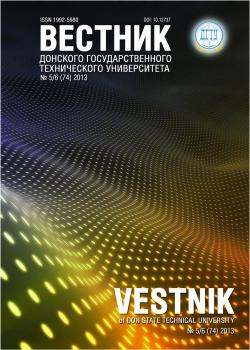The subject of this paper is the Ni-P chemical coatings on steels and alloys. The research goal is to determine the capabilities of improving the quality and performance properties of the coatings under the rapid laser processing. Metal physical research methods – optical and electron-probe microscopy, hardness measurement, X-ray and electron microprobe analysis – are used. Anti-friction properties of the irradiated coatings are determined under testing on the tribometer. The study results have shown that the laser irradiation of chemical coatings can increase the hardness of the steel surface layers, advance the adherence strength of the coating to the steel substrate, lower the friction factor, and enhance the wearability of the coated steels.The results obtained allow reasonably choose modes of laser processing for chemical coatings leading to the consolidation and degassing of the steel surface layers, the increase of the coating adhesion to the substrate, the improvement of the surface morphology, the formation of a relatively perfect texture in the steel surface layers, and to the reduction of the burnout of alloying elements from the surface layers of materials.The studies show that the laser treatment of chemical coatings improves the quality of the surface layers of steels and alloys, increases the strength of coating adhesion to the metal substrate, increases the hardness, decreases the friction factor, and increases the wear resistance of steels with chemical coatings
laser machining, chemical coatings, properties and quality of the alloy surface
Введение. Как известно, химические покрытия на никелевой основе, широко применяемые для повышения износостойкости деталей машин и инструмента, после осаждения имеют недостаточно высокую прочность сцепления с подложкой [1]. В связи с этим появляется необходимость проведения их термообработки. При нагреве на границе покрытие – подложка образуется диффузионный слой, предотвращающий отслаивание покрытий при эксплуатации изделий [2-4].
Традиционно термическая обработка химических покрытий заключается в печном нагреве до температур 300-400оС в течение 1 часа. Такой нагрев приводит к повышению эксплуатационных свойств покрытий, но сопровождается снижением основных свойств изделий в целом в случае изготовления их из углеродистых или низколегированных сталей.
С этой точки зрения перспективным является проведение локальной лазерной термообработки участков изделий с покрытием, подверженных максимальному износу при эксплуатации [5-8].
Для оптимизации процесса лазерного облучения необходимо выяснить степень влияния режимов обработки на строение и основные свойства покрытий на никелевой основе.
1. Vishenkov, S.А. Khimicheskie i elektrotermokhimicheskie sposoby osazhdeniya metallopokrytiy. [Chemical and electrothermochemistry methods of metal coatings deposition.] Moscow : Mashinostroenie, 1975, 311 p. (in Russian).
2. Tushinskiy, L.I. Issledovanie struktury i fiziko-mekhanicheskikh svoystv pokrytiy. [Investigation of structure and mechanical-and-physical properties of coatings.] Moscow : Mashinostroenie, 1986, 216 p. (in Russian).
3. Lapshin, O.V., Ovcharenko, V.E., Savitskiy, A.P. Dvizhenie mezhfaznoy granitsy pri vzaimodeystvii tverdogo metalla s zhidkim. [Motion of the interface in the interaction of solid metal and liquid.] Fizika i khimiya obrabotki materialov, 1999, no. 6, pp. 77-80 (in Russian).
4. Lyubov, B.Y. Diffuzionnye protsessy v neodnorodnykh tverdykh sredakh. [Diffusion processes in heterogeneous solid media.] Moscow: Nauka, 1981, 296 p. (in Russian).
5. Vedenov, А.А., Gladush, G.G. Fizicheskie protsessy pri lazernoy obrabotki materialov. [Physical processes under laser material treatment.] Moscow: Enegroatomizdat, 1985, 224 p. (in Russian).
6. Lomayev, G.V., Kharanzhevskiy, E.V. Uprochnyayushchaya obrabotka poverkhnosti metodom vysokoskorostnoy lazernoy perekristallizatsii. [Hardening surface treatment by high-speed laser recrystallization.] Metallovedenie i termicheskaya obrabotka metallov, 2002, no. 3, pp. 27-32 (in Russian).
7. Lyakhovich, L.S., Isakov, S.A., Kartoshkin, V.M. Lazernoe legirovanie. [Laser alloying.] Metallovedenie i termicheskaya obrabotka metallov, 1987, no. 3, pp. 14-19 (in Russian).
8. Wood, J.V., Honeycombe, R.W.K. Bystrozakalennye kristallicheskie splavy na osnove zheleza. [Rapidly quenched crystalline iron-based alloys.] Sverkhbystraya zakalka zhidkikh splavov. [Rapid quenching of liquid alloys.] Moscow: Metal-lurgiya, 1986, 375 p. (in Russian).
9. Galenko, P.K., Kharanzhevskiy, E.V. Danilov, D.A. Vysokoskorostnaya kristallizatsiya konstruktsionnoy stali pri lazernoy obrabotke poverkhnosti. [Rapid solidification of structural steel under laser surface treatment.] Zhurnal tekhnicheskoy fiziki, 2002, vol. 72, iss. 5, pp. 48-55 (in Russian).
10. Malinov, L.E., Kharianova, E.Y., Zarechenskiy, A.V. Armirovanie poverkhnosti staley za schet primeneniya dif-ferentsirovannoy obrabotki. [Reinforcement of steel surfaces through the use of differentiated treatment.] Izvestia. Ferrous Metallurgy, 1992, no. 4, pp. 37-39 (in Russian).
11. Topfenets, R.L., Vasilyeva, L.A., Shevno, I.M. Transformatsiya dislokatsionnoy struktury pri iznashivanii napravlenno kristallizovannogo splava Al-4%Cu. [Transformation of dislocation structure under wear of direct-crystallized alloy of Al-4% Cu.] The Physics of Metals and Metallography, 1984, vol. 58, iss. 3, pp. 532-536 (in Russian).





